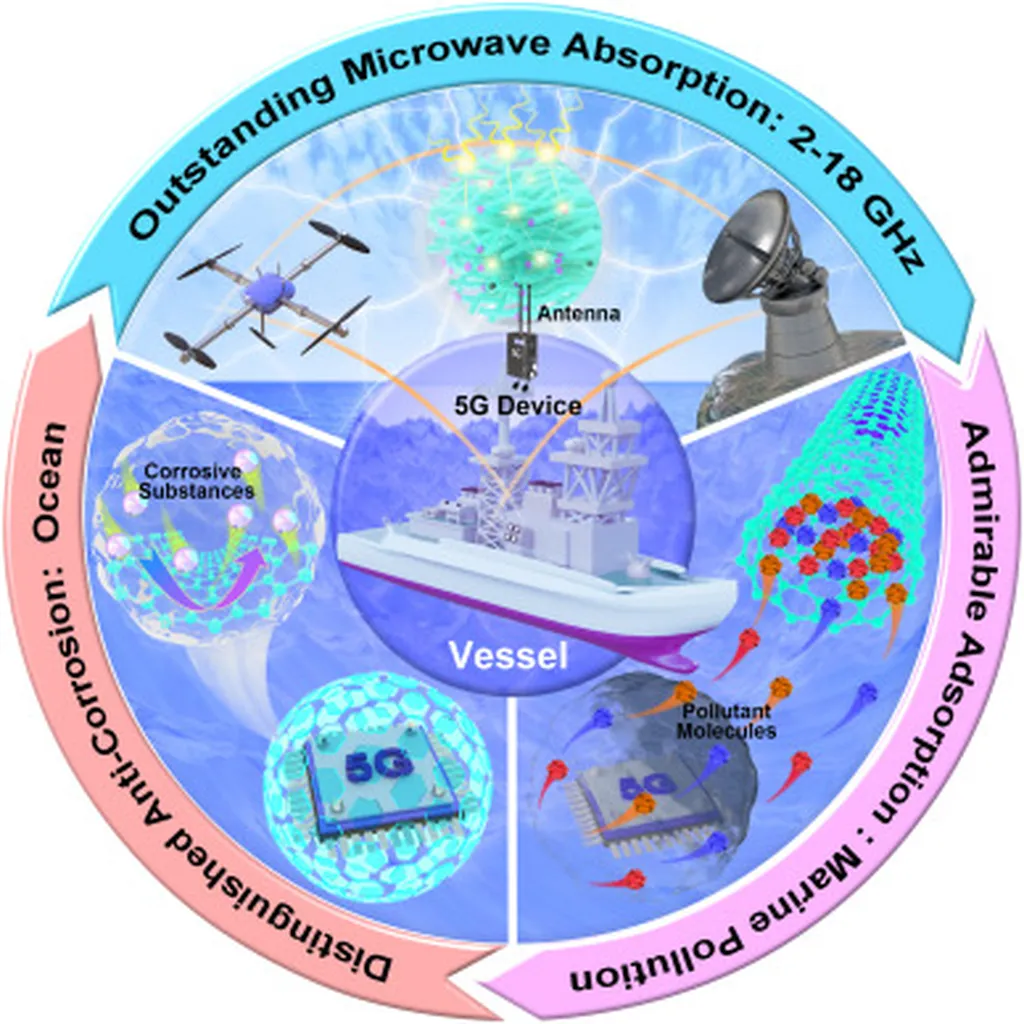In a significant stride for maritime defense and transportation, researchers have developed a novel material that simultaneously tackles microwave absorption and corrosion resistance. The study, led by Limeng Song from the Henan Key Laboratory of Aeronautical Materials and Application Technology at Zhengzhou University of Aeronautics in China, introduces a multifunctional coating that could revolutionize how we protect and utilize materials in harsh maritime environments.
The research, published in the journal *Advanced Science*, focuses on SiC@SiO2@C (SSC) nanofibers. These nanofibers are engineered to address two critical challenges in maritime applications: efficient microwave attenuation and corrosion resistance. Song and his team have managed to create a material that not only absorbs microwaves effectively but also resists corrosion, a common issue in saline environments.
The key to this breakthrough lies in the unique structure of the SSC nanofibers. By layering SiC nanofibers with SiO2 interlayers and nitrogen-doped carbon shells, the researchers have created a material rich in heterointerfaces and defects. These features enhance impedance matching and introduce multiple loss mechanisms, including conduction, interfacial, and defect-induced dipole polarization. As Song explains, “The abundant heterointerfaces and defects effectively regulate impedance matching and introduce multiple loss mechanisms, significantly improving the material’s performance.”
The practical implications for the maritime industry are substantial. The SSC nanofibers achieve a minimum reflection loss of -52.40 dB and a maximum effective absorption bandwidth of 7.68 GHz. This means that the material can effectively absorb a wide range of microwave frequencies, making it ideal for applications in radar cross-section reduction and electromagnetic interference shielding. Additionally, the superior corrosion resistance of the SSC/polyvinylidene fluoride (PVDF) composite coatings ensures that materials used in maritime environments remain protected from the corrosive effects of saltwater.
For maritime professionals, this research opens up new avenues for enhancing the durability and functionality of materials used in ships, offshore structures, and other maritime assets. The ability to combine microwave absorption with corrosion resistance in a single material is a game-changer, offering improved performance and longevity in challenging environments.
Song’s work underscores the potential of heterointerface engineering in creating multifunctional materials that can withstand the rigors of maritime applications. As the industry continues to seek innovative solutions to enhance safety and efficiency, the SSC nanofibers represent a promising development. The research not only highlights the importance of advanced materials in maritime defense and transportation but also paves the way for future advancements in this critical field.

